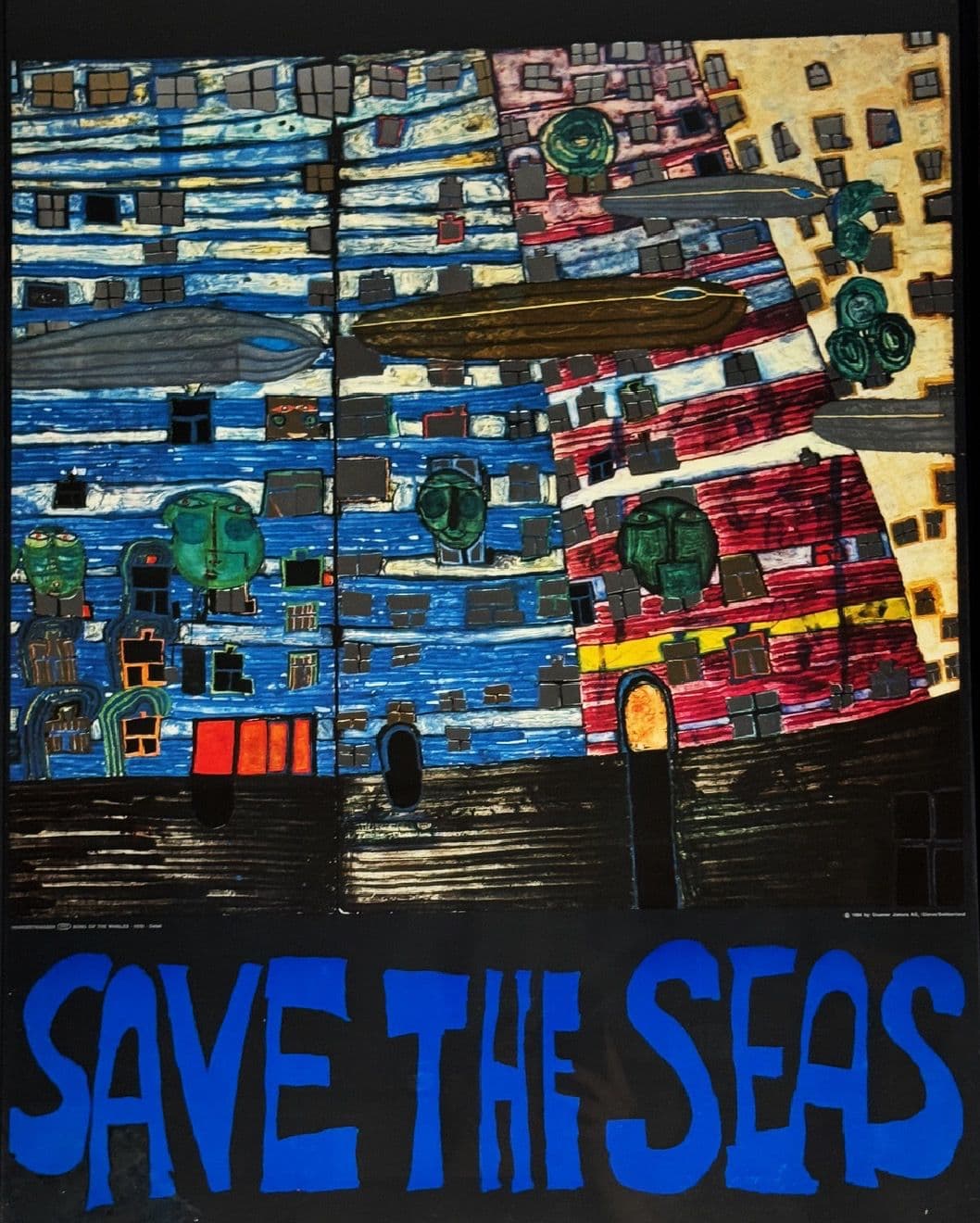
Friedensreich Hundertwasser (1928–2000) was an Austrian artist, architect, and environmentalist whose work defied convention and celebrated individuality, nature, and vibrant color. Born Friedrich Stowasser in Vienna, he adopted the name "Friedensreich Hundertwasser," which translates to "Peaceful Kingdom Hundred Waters," reflecting his commitment to peace and the environment.Hundertwasser's artistic style is instantly recognizable, characterized by swirling lines, bold colors, and organic forms. He rejected straight lines, which he called "godless," favoring irregular, nature-inspired designs. His paintings often featured intricate patterns, spirals, and symbolic elements, and he embraced a philosophy of unity between art, humanity, and the natural world.As an architect, Hundertwasser was a visionary who sought to integrate buildings with their surroundings. His designs, such as the Hundertwasserhaus in Vienna and the KunstHausWien, feature undulating floors, living roofs, and colorful facades that challenge traditional architectural norms. He believed in the "right to a window" and that individuals should have the freedom to decorate their living spaces as an extension of their personality.Hundertwasser was also a passionate environmental activist, advocating for sustainable living and ecological harmony. His campaigns against pollution, deforestation, and nuclear energy were aligned with his belief that humans should live in harmony with nature. He designed eco-friendly structures and proposed innovative ideas, such as composting toilets and tree-planting initiatives.His legacy is preserved through his artworks, architectural projects, and environmental philosophies, inspiring generations to embrace creativity, individuality, and ecological consciousness.

